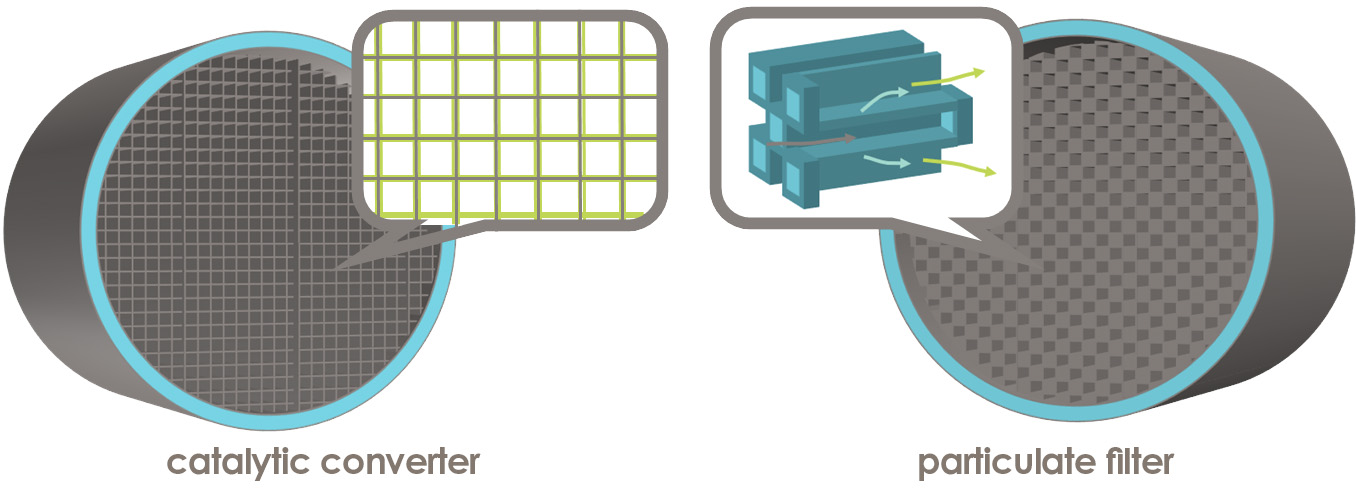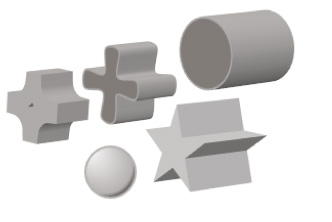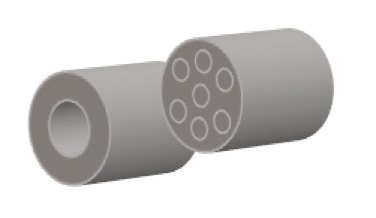emissions control & catalysts
who helps create cleaner emissions? we do.
emission control ceramics
Manufacturers of advanced ceramics such as catalytic converters, gasoline & diesel particulate filters and industrial environmental filters require ingredients that provide the right amount of plasticity and workability during the shaping and molding process, while maintaining firmness of the wet mass after extrusion and before/during drying (wet green strength). Other advanced ceramics like catalyst carriers made into different shapes and using various shaping techniques (extrusion, dry pressing, isostatic pressing, etc.) also require organic binders to provide strength and cohesion of the shaped ceramic product.
During the drying process, these ingredients help ensure uniform, controlled drying and prevent the formation of cracks and blisters that can affect the performance of the converter, filter and other shapes. Although the needs are the same, different binders are used for the different manufacturing processes depending on raw materials, equipment as well as end product requirements. All manufacturers want to minimize costly equipment maintenance and repairs so they are also looking for products that help reduce wear and tear on manufacturing equipment and completely burn so there is little to no residue to deal with after manufacturing. Ashland offers a variety of products that can help solve these manufacturing needs.

catalytic washcoats
The most important part of an emission control product is the catalyst, mainly platinum group metals (PGM’s). Those catalysts are typically applied onto an inorganic support in form of a slurry. Those thin coatings, the catalytic washcoats, needs to have controlled rheological properties depending on the way of application. Pseudoplastic or Newtonian flow properties are the most common ones. Ashland products help adjusting the rheology to become suitable for the application and secure stability even under harsh (often strongly acidic) conditions.
activated carbon extrusion
Similar to ceramic substrates or particulate filters also activated carbon can be extruded with help Ashland binders. Typical shapes are honeycombs, pellets or sheets. Outstanding plasticity is one of the key properties provided by Ashland. Activated carbon containing canisters are used in the automotive segment to adsorb evaporating fuel gases and feed them back into the combustion engine. Those systems help saving thousands of tons of fuel globally per day and prevent the fuel gases from being released into the environment.

catalyst supports & bed topping media
Other advanced ceramics like catalyst carriers made into different shapes and using various shaping techniques (extrusion, dry pressing, isostatic pressing, etc.) also require organic binders to provide strength and cohesion of the shaped ceramic product. Industrial catalysts, often shaped by extrusion only require small amounts of additives to secure the required plasticity, extrudability and also have an impact on porosity depending on chemistry chosen.

ceramic filter membranes
Purification of liquids through nano-, micro- or ultra-filtration is requiring ceramics with a well defined porosity. Those ceramics, in tubular or sheet form are also often manufactured using extrusion processes. Good plastification for an optimal extrusion is key and so is shape retention. Ashlands product portfolio offers various products as extrusion binders, which need to be chosen well for an optimal result.

products
Emissions control and catalysts products are listed below, use the filters to find the products that meet your specific needs.
read more >
culminal™ & benecel™ methyl cellulose derivatives
Methyl cellulose derivatives are widely used in advanced ceramics as e.g. green strength binders for ceramic extrusion. Examples are emission control ceramics as well as catalyst carriers for use in industrial processes. Depending on the chemistry of the binder (or combinations of binders used) the rheological profile changes. The formulations can be fine-tuned by picking the right binder or binder combination to achieve the correct plasticity o...
aqualon™ and blanose™ carboxymethylcellulose (CMC)
Aqualon™ & blanose™ carboxymethylcelluloses are used as binders in manufacturing processes for activated carbon honeycombs and pellets as well as heterogeneous industrial catalysts (support and bed topping media)
klucel™ hydroxypropylcellulose
Hydroxypropyl cellulose products are very special in their properties. Being soluble both in water and polar organic solvents it offers very large choice of solvents or solvent combinations to be used in. This opens a lot of application fields from die pressing over slip and tape casting and, due to Its thermoplastic character, makes it an excellent chemistry to be used in injection molding processes, where the binder melts/liquifies upon tempera...
natrosol™ hydroxyethylcellulose
Hydroxyethyl cellulose products find use in various ceramic shaping processes. Low molecular weight products are being used in e.g. ceramic slips for die pressing, slip- and tape casting. Higher molecular weight HEC is used in ceramic extrusion processes, where it supports extrusion at higher temperatures. Natrosol™ products are available in: various substitution levels, depending on end application needs low to very high molecular weight ...


